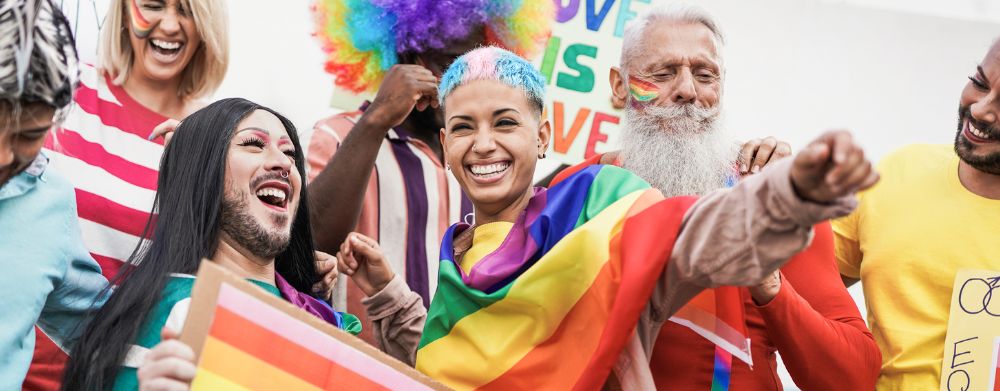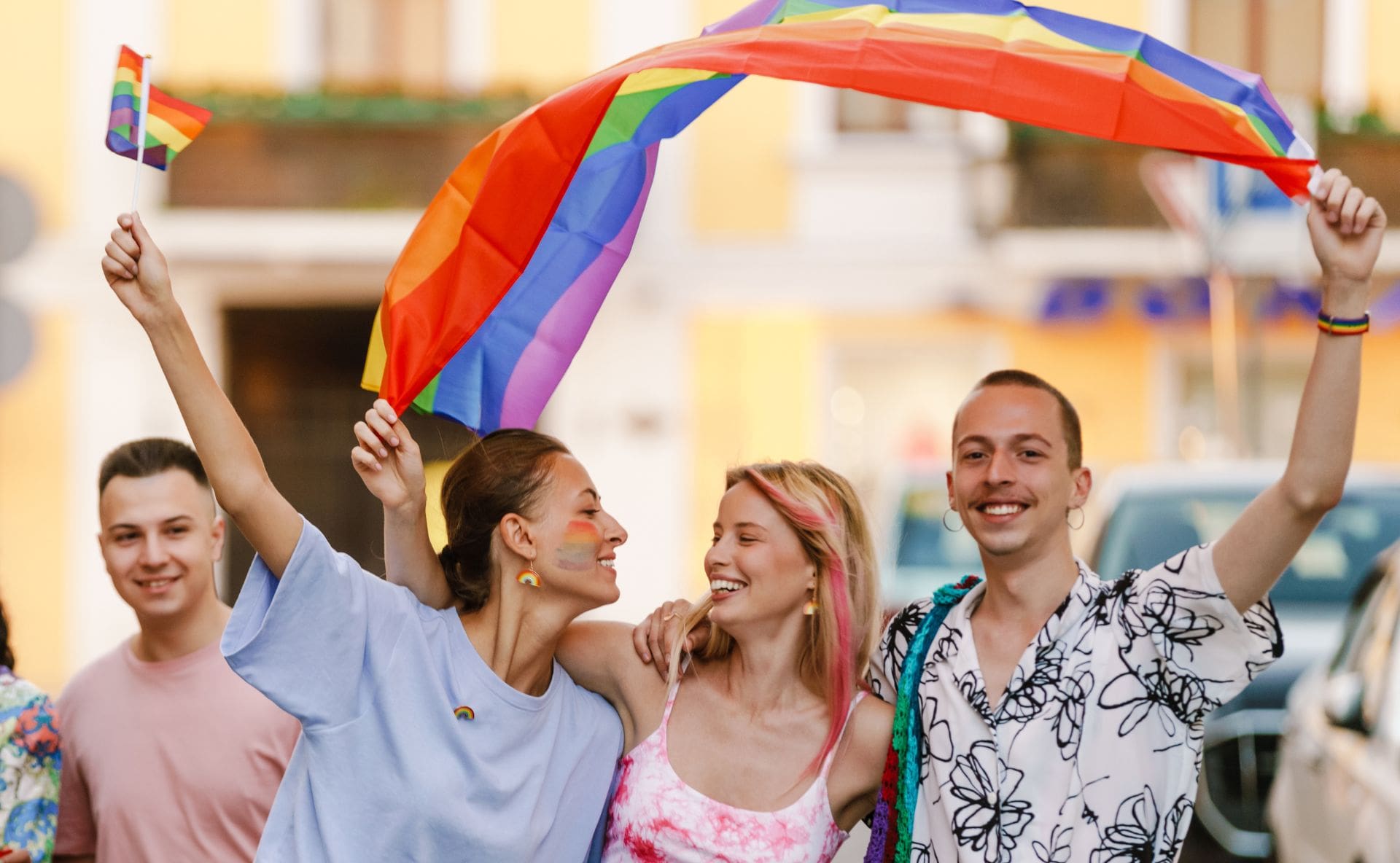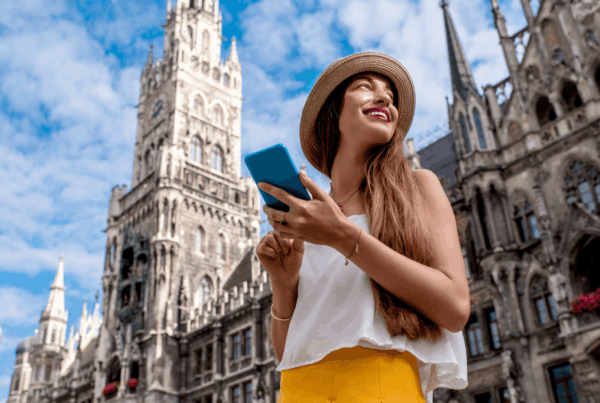What does it truly mean for a destination to be LGBTQ+ friendly today, and what are the real benefits—both reputational and economic?
Data Appeal, together with Aalap Shah, International Business Relations Manager at Queervadis of Sonders and Beach, looked into the best practices international destinations need to follow to move beyond symbolic gestures and genuinely become welcoming, inclusive spaces—for everyone.
LGBTQ+ travel: A £200 billion-a-year market
As Aalap Shah pointed out, LGBTQ+ travellers are often among the first to explore new destinations and invest significantly in unique experiences, setting trends that quickly spread globally and across different audiences.
There’s no doubt that travel is a top spending priority for members of the LGBTQ+ community—but it’s not just that: when they travel, they tend to spend well above the average.
According to data from the World Travel & Tourism Council (WTTC) and the International Gay & Lesbian Travel Association (IGLTA), the LGBTQ+ travel market is worth over £200 billion a year, with £65 billion coming from the US alone, where LGBTQ+ travellers make up a full 10% of all tourists.
Arival’s 2024 report shows that LGBTQ+ travellers take part in two more activities per trip and spend 23% more than other tourists, highlighting both their strong spending power and high propensity to travel.
In short, the main benefits of being a more inclusive destination are:
- Ethical stance: Becoming an inclusive destination signals, above all, a genuine commitment to ethics and human rights. It demonstrates in concrete terms the value a place places on equality and fosters a sense of belonging that resonates with both visitors and locals.
- Economic benefits: Events like Pride clearly generate significant visitor flows and substantial economic impact for the local tourism ecosystem, driving growth across multiple levels.
- Reputational benefits: LGBTQ+ travellers are likely to share their experiences when visiting safe and inclusive destinations, boosting positive sentiment, satisfaction, and digital visibility. This word-of-mouth has a direct economic impact on hotels, restaurants, and cultural venues.
- Sustainability perception: Inclusivity is a key pillar of sustainability. A welcoming approach like this enhances a destination’s overall image among all tourist groups, including families, people with disabilities, older travellers, and religious communities.
- Tourism effects: Events like Pride attract a wide range of visitors of all ages. A Data Appeal study shows that during Madrid Pride, accommodation prices rose by 14–21% compared to the previous year when there was no Pride. The impact lasted over a longer period, demonstrating that Pride encourages longer stays, deeper exploration of the city, and visits to smaller destinations across Spain, generating long-term benefits.
Data Appeal’s analysis of Pride events in some of Europe’s top destinations confirms the significant economic and tourism impact this market has today.

Madrid Pride attracts 2 million visitors and generates €100 million in revenue
The unprecedented rise in popularity of Pride festivals across Europe and North America is a clear sign of the weight of LGBTQ+ tourism.
To explore the economic and tourism impact of Pride, The Data Appeal Company revealed attendance figures and related spending for some of Europe’s largest Pride events.
For instance, London Pride ranks as the most popular event in the English capital in the second half of the year.
The same goes for Stockholm, where Pride is the second most impactful event over the next six months, both in terms of attendance and economic spending.
The highest figures, however, are recorded in Madrid, where MADO – Madrid Orgullo, a multi-day event, attracts 2 million visitors and generates an estimated €109 million in spending. This even surpasses the €101 million estimated for the Barcelona-Catalunya F1 Grand Prix.
So, it’s not just the number of visitors that’s impressive—the spending generated is often comparable to, or even higher than, some of the world’s biggest events, such as Champions League finals, major tennis tournaments, or stadium tours by stars like Taylor Swift and Coldplay.

Among the various sectors, the one most affected by these events is hospitality: in all the examples cited, well over 60% of the estimated spending is on food & beverage. This is clear evidence of how culinary experiences have become a crucial part of the overall tourist experience at events.
What drives Pride’s popularity? While there are several reasons, the key ones are:
- A wide-reaching, inclusive celebration
Pride parades and related events have taken on a festive character, reminiscent of carnivals or cultural festivals: they’re no longer purely political events, but inclusive celebrations that attract a wide audience.
Pride isn’t seen as an event just for the LGBTQ+ community—it’s for everyone. The festive, joyful atmosphere is contagious, drawing in allies of all ages, families with children, and groups of friends who view Pride as a shared symbol of openness, safety, welcome, and fun. - Participation and engagement of operators and stakeholders
In recent years, Pride has proven to be an excellent growth opportunity for hotels, tour operators, and other local businesses. This encourages all destination stakeholders to support and promote Pride, increasing its popularity and visibility.
6 Best practices for becoming an inclusive destination
For those working in tourism, building safe, open, and welcoming offers and services for the LGBTQ+ community is a significant investment—one that can have a tangible impact on both the economic wellbeing of a destination and its overall reputation.
In this context, inclusivity becomes an essential part of tourism growth strategies.
Yet, it seems that not all destinations are keeping pace with this trend. How can they drive an inclusive transformation, and how can they monitor perceptions and progress?
In the recent webinar Pride and No Prejudice: Is Global Tourism Inclusive Enough in 2025?, Data Appeal and Sonders & Beach highlighted some key steps in this process.
1 – Be inclusive for everyone, not just the LGBTQ+ community
When a destination designs services and offerings for LGBTQ+ tourism, it often ends up doing so for everyone who expects a more open and inclusive destination—even without realising it.
It’s important to remember that inclusivity is about embracing all forms of diversity, without exception.
That’s the one thing I love about designing for LGBT communities: it’s such a broad spectrum. And it reflects how any city, any destination, can really make a difference”
Aalap Shah . International Business Relations Manager di Queervadis, Sonders and Beach
2 – Engage and align all operators and stakeholders
For a destination to be truly welcoming, it’s essential that those who interact with tourists on the front line—hoteliers, restaurateurs, shopkeepers, and even local residents—share that mindset.
It’s therefore crucial to develop shared materials and training opportunities to ensure all stakeholders are aligned and able to communicate and embed inclusivity in their daily activities.
It’s these direct interactions that make the difference, and the destination, together with local institutions, has a responsibility to cultivate and promote this mindset.
Hannah Babineau – Head of Partnerships and Business Development, Data Appeal
3 – Show genuine commitment and avoid pinkwashing and rainbow washing
Visitors recognise the difference between authentic action and token gestures.
Simply placing a rainbow flag next to the logo during Pride Month isn’t enough. What matters is that the destination undertakes a strategic process to offer truly inclusive experiences year-round, from every angle.
In other words, it’s essential to show that the destination genuinely embraces diversity and to avoid giving the impression of pinkwashing or rainbowwashing—the practice of using LGBTQ+ symbols, like the rainbow flag, to appear inclusive without implementing real policies or tangible changes.
“This is exactly what we do at Sonders & Beach for many operators: training staff, looking at the supply chain, and considering every single moment that matters to travellers. Even in complex political contexts like the one we’re in now, we’ve found that it’s often small local businesses that really step up to show welcome and inclusivity.
Many travellers are drawn to these places because they can tell the difference between someone who just puts up a rainbow sign for a month and someone who’s truly invested in training, marketing, and hospitality.” (Aalap Shah)
4 – Create a compelling and authentic narrative
Becoming more inclusive and LGBTQ+ friendly also means deliberately choosing a communication and marketing strategy that aligns with travellers’ needs.
One of the most successful examples in this regard is the city of Stockholm.
A key strength of Sweden, and the Nordic countries more broadly, is the decision not to target exclusively gay men, but to extend marketing and initiatives across the entire LGBTQ+ spectrum: lesbian women, trans and non-binary people, and rainbow families.
This approach allows destinations to reach broader market segments, make their positioning more authentic, and stand out from other European destinations.
5 – Create inclusive personas and plan year-round
Becoming an inclusive destination isn’t just about June—it’s an ongoing commitment that starts with a simple question: who are we really welcoming?
Many LGBTQ+ travellers choose their destinations based on two key factors: the values of the destination (staff training, genuine attention) and perceived safety. Creating personas can help you better understand who your ideal guests are and what they expect from you.
Planning is also important: Pride matters, but there are plenty of other opportunities throughout the year to attract visitors. These events not only reinforce a destination’s image of openness but also help spread tourist flows across the low season.
6 – Turn data into inclusive stories that guide your strategy
For tourist destinations, collecting data on this market isn’t enough: the data needs to be turned into stories that speak to both travellers and stakeholders.
People want to understand not just the numbers, but the message those numbers convey.
Pride events, for example, aren’t just LGBTQ+ gatherings—they’re cultural, family, and economic events that signal to the market that a destination is open, progressive, and diverse. These signals attract not only LGBTQ+ travellers but also their allies and families, amplifying the overall impact.
From this perspective, Thailand demonstrates the power of this approach:
- Local activists, businesses, and the government used comparative data and predictive analysis to show how recognising marriage equality would generate direct economic benefits.
- Legalisation became a genuine tourism driver, with an estimated +4 million visitors and over $2 billion in revenue.
The result is a concrete example of how inclusive policies, data, and storytelling can work together to boost a destination’s competitiveness.
For a destination manager, this means collecting and analysing data on sentiment, spending, and inclusivity perception; translating that data into clear, engaging stories; and using inclusive storytelling to stand out from other destinations that don’t invest in these policies.

Inclusivity and artificial intelligence: Applying the latest tech to create better experiences
Inclusion isn’t just a matter of values—it’s also a challenge of knowledge and organisation. This is where artificial intelligence can make a real difference. With the new D/AI Destinations module, destinations have access to Smart Insights tools that analyse and interpret thousands of reviews, online content, and spending data in real time.
This makes it possible to identify which areas of a city are perceived as most welcoming, which services are valued by rainbow families or LGBTQ+ travellers, and where issues arise. AI doesn’t just describe—it suggests concrete actions, from staff training to creating new services, and even promoting events that meet the needs of diverse communities.
This way, inclusivity becomes measurable, strategic, and—most importantly—improvable over time: a competitive lever to attract visitors, strengthen reputation, and make a destination genuinely open to all.





